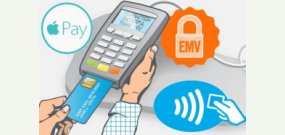Data Conversion Issues and Information
When moving to a new Point of Sale (POS) Software system, most people want to move/convert data from their ‘old’ system to the new one. While this is possible with most POS Software systems, there are some things to consider and watch out for in order to make the move as easy as possible.
Label/Name fields for clarification – Although when you look at your data, it is easy to see which column is a department code, a retail price, cost, etc never assume other people will be able to distinguish the columns the same way. Always clearly label the columns to avoid confusion.
Verify data types between applications – If you used alpha-numeric values for such entries as department code, customer numbers, vendor numbers, etc. Make sure the new system can also use alpha-numeric. If it cannot, make a list of mappings to be used in the data conversion – A10 = 100, A11 = 101, etc.
Verify data as it is moved from one application to another – a common problem with data conversion is the data ‘changing’ as it is moved from one application to another. One common cause of this is data being exported to a text file, opened in Excel to verify/modify the data and then saved. Unless care is taken, Excel will set data the ‘appears’ to be numeric as a number field. This will remove leading zeros and cause issues if any of the data is alpha-numeric.
Verify hardware formatting with data – Barcode/UPC/EAN codes can be converted correctly and still not work as desired in the new POS Software application. This is usually due to hardware setup or (as stated above) data changing between applications. Barcode scanners can be setup to read or ignore check digits (as well as many other formatting options). An easy way to tell how a barcode scanner is ‘reading’, is to open Notepad, scan several items and compare the output with the barcode on the item.
In summary, verify your data and communicate in detail with your POS Software company before the conversion. You will benefit and save lots of headaches in the long run.




